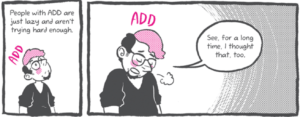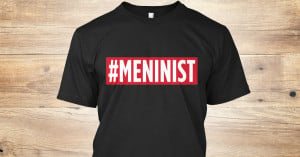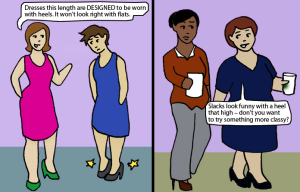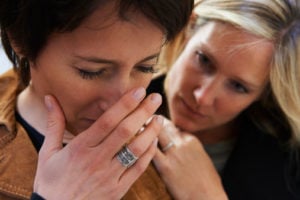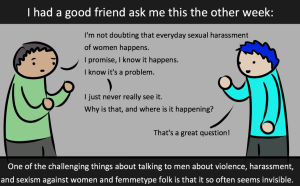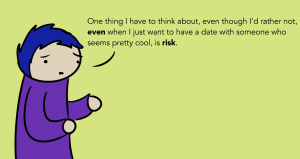The Beauty Bias Modcloth
Sexplanations with Dr. Doe
Dr. Doe: Every year, there have been beauty pageants to determine who takes home the winning title, from Miss Florida to Miss Universe. And from the beginning, these women have looked so similar: hourglass figures, flat stomachs, toned arms, symmetrical faces with smooth complexions, and wide smiles with straight teeth.
Men are also graded for their looks. Take a look, for example, Glamour’s 100 Sexiest Men with their own trend: strong jaw, a little scruff, piercing eyes, broad shoulders, and defined abs.
These are the beauty standards of my culture and the closer someone is to reaching these standards the more benefits they tend to receive. Generally, more popularity, higher grades, and work performance evaluations. Beautiful people are more likely to be hired and promoted. And on average they make more money than their less attractive colleagues.
If someone handsome commits a crime, they’re less likely to be found guilty and their sentences are less severe. This is called the “beauty bias.” It’s the same bias that makes you think that pretty people are smarter, healthier, more competent, and superior – both socially and morally.
It’s not based on facts; it’s based on judgment but we give better treatment to people who look nice so we strengthen the bias. Who gets the better education, better training, healthcare, resources, and better opportunities to be smarter, healthier, and wealthier?
Pretty people!
Who gets to play the lead in movies?
Pretty people!
The sidekicks, the villains?
Less pretty. Bad guys are often denoted by their facial scars. They’re either much bigger or thinner, paler or darker than the beauty standard.
For centuries, we’ve constructed beauty ideals and given preferential treatment to those who achieved them. Take for example 1000 years of foot-binding. Crushing and wrapping girls’ feet so that they’ll be more attractive and marriageable. A tenth century Chinese emperor fancied the small, bound feet of a dancer. So in order to appeal to the new ideal of beauty parents began to bind their daughters’ feet. And their daughters and their daughters’ daughters followed suit perpetuating the three-inch golden lotus foot as gorgeous.
Anything larger would make it harder to snag a mate. Every era and every culture has something like this. Here, it’s been circumcision, liposuction, butt lifts, makeup, high heels, hair extensions, glue on lashes, labiaplasty – which is one of the fastest-growing cosmetic surgeries and entails trimming the vaginal lips.
The difference between past beauty standards and those of today is the pervasiveness of mass media messages around them. On average, you’re hit with 30,000 ads a day. That’s 3000 potential you’re-not-good-enough’s, 3000 what-you-should-look-like-instead’s. It’s inarguably a main source of poor body image and low self-esteem.
An epidemic of insecurity that’s reaching us at younger and younger. By age ten, over 70% of American girls have tried dieting. 66% of underweight 12-year-old girls say they’re “too fat.” At age 13, 50% of girls report being unhappy with their appearance. And by 18, the number is closer to 80%.
More than 1/3 of six, seven, and eight-year-old boys want a bulkier body than they have. 38% of boys ages 12 to 18 use protein supplements and 6% use steroids. 90% of them exercise to gain muscle while 15% of boys are also concerned with being more trim.
This doesn’t even include transgender kids who struggle with gender expression in addition to incredibly high beauty standards. Our society’s portrayals of beauty are also very biased, binary, and polarizing. This or that, it’s hot or not. The trans community in particular may then feel like their bodies are the enemy.
Research shows us that adolescents with poor body image are more likely to be depressed, anxious, and suicidal. So what do we do?
- Accept that appearance is important. It’s a major way we see ourselves and relate to each other. So if a person’s seeking external validation, cosmetic surgery, expensive clothing products, procedures, etc – it’s because they want to feel better.
- To promote more diverse and positive ideas about body image, take a complete inventory of your body. Not just the appearance of it. Not just what you dislike. Everything! My flabby arms, my expressive face.
- Give yourself options. If Barbie doll and GI Joe physiques are what you’re used to, spend some time admiring other looks. People of different ages, ethinic backgrounds and expressions. Retrain your eye to see the other 95% of the planet.
- Be kind to everyone, including the beautiful people. Beautiful people have their own insecurities and pressures. They tend to question if rewards are because of their looks or their actions and they feel a greater sense of pressure to stay attractive.
- Hang out in groups. Teens who date in groups are significantly more positive about their bodies than teens who spend time one on one.
- Participate in sports. Exercise is considered as therapeutic as conventional psychotherapy in treating negative body image. And people who play sports have more body positivity than those who don’t.
- If there’s a problem, seek treatment. Dysmorphophobia and imagined ugliness disorder deserve professional attention. Please ask for help.
- Say what you want to be true. I like the affirmations from Ashley Graham’s talk on body image. You are bold, you are brilliant, and you are beautiful. There is no one else like you. I’m going to choose to love you. I’m going to keep you.
- Model healthy body image. This includes receiving compliments with a simple, “Thank you,” giving compliments that aren’t just appearance-focused, and taking pride in the way you look while keeping the time you groom to a minimum.
- Stay curious! For me, that’s doing more research, like understanding why women of color are less hung up on beauty standards than white women. Or why gay men are more concerned than straight men but gay women are less concerned with appearance than straight women. I want to understand how my own choice not to have cable may or may not improve body image, so I’m going to stay curious.
This episode was brought to you by all of our amazing supporters on Patreon. Patreon is a website that facilitates creators like me to be paid by fans like you. If you can’t give anything, that’s okay. We’ll still stay freely accessible. But it you can, we appreciate every dollar.
Thank you!






